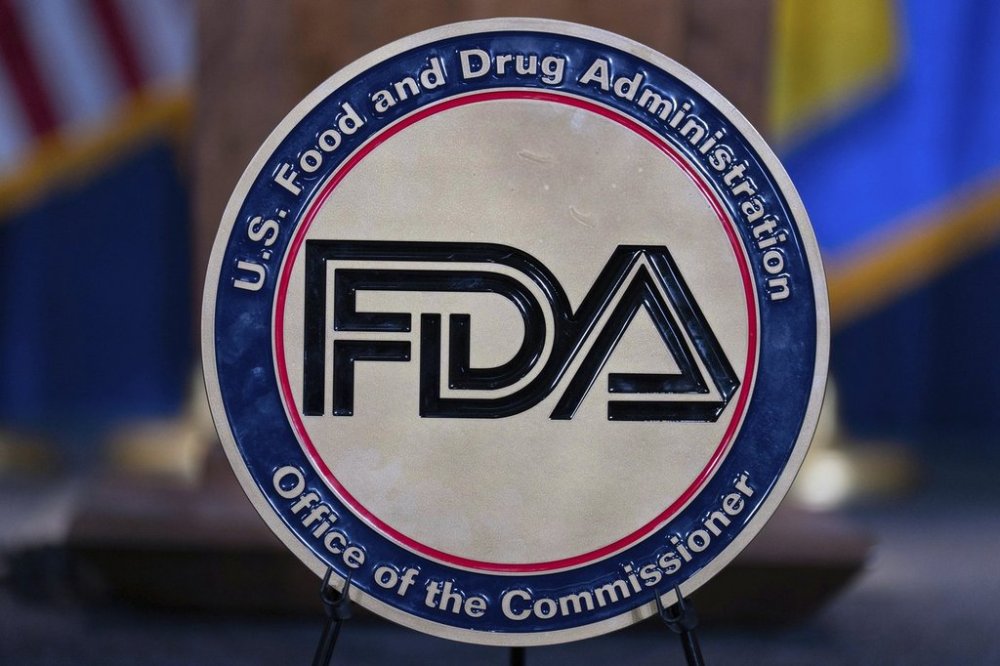FDA proposes ban on Orange B, a food dye not used for decades
Advertisement
Read this article for free:
or
Already have an account? Log in here »
To continue reading, please subscribe:
Monthly Digital Subscription
$0 for the first 4 weeks*
- Enjoy unlimited reading on winnipegfreepress.com
- Read the E-Edition, our digital replica newspaper
- Access News Break, our award-winning app
- Play interactive puzzles
*No charge for 4 weeks then price increases to the regular rate of $19.00 plus GST every four weeks. Offer available to new and qualified returning subscribers only. Cancel any time.
Monthly Digital Subscription
$4.75/week*
- Enjoy unlimited reading on winnipegfreepress.com
- Read the E-Edition, our digital replica newspaper
- Access News Break, our award-winning app
- Play interactive puzzles
*Billed as $19 plus GST every four weeks. Cancel any time.
To continue reading, please subscribe:
Add Free Press access to your Brandon Sun subscription for only an additional
$1 for the first 4 weeks*
*Your next subscription payment will increase by $1.00 and you will be charged $16.99 plus GST for four weeks. After four weeks, your payment will increase to $23.99 plus GST every four weeks.
Read unlimited articles for free today:
or
Already have an account? Log in here »
Federal regulators are proposing to remove another artificial dye from the U.S. food supply — Orange B, a synthetic color that hasn’t been used in the U.S. for decades.
The U.S. Food and Drug Administration said Wednesday that it would seek to repeal the regulation allowing use of the dye approved in 1966 to color sausage casings and frankfurters. No batches of the dye have been certified, or asked to be used, since 1978, FDA officials said.
“Its use has been abandoned by industry,” the agency said in a statement. “The color additive regulation is outdated and unnecessary.”

But consumer advocates who have called for tougher FDA regulation of food dyes and other additives for decades have suggested it was an empty gesture.
“It says they are currently willing to take mandatory steps only where it has no impact,” said Sarah Sorscher, who directs regulatory affairs for the Center for Science in the Public Interest, an advocacy group.
The move follows the FDA’s decision in January to ban Red No. 3 because of potential cancer risk. That dye has been used far more widely in candies, snack foods and medicines.
The Orange B proposal is separate from a successful push by the Trump administration this year to pressure top food manufacturers to voluntarily remove artificial food dyes from products ranging from cereals and yogurt to sodas. After a brief public comment period, it would take effect within 45 days.
U.S. Health Secretary Robert F. Kennedy Jr. and FDA Commissioner Marty Makary have pledged to remove petroleum-based dyes from U.S. foods, citing concerns about children’s health.
Mixed studies have indicated that exposure to food dyes can cause behavioral problems in some children, including hyperactivity and attention issues. However, the FDA has maintained that approved dyes are safe and that “the totality of scientific evidence shows that most children have no adverse effects when consuming foods containing color additives.”
Recently, the FDA included six food dyes widely used in the U.S. — Green No. 3, Red No. 40, Yellow No. 5, Yellow No. 6, Blue No. 1 and Blue No. 2 — on a list of chemicals under agency review. Another approved dye, Citrus Red No. 2, is rarely used and found in small amounts in the skin of some citrus products.
___ The Associated Press Health and Science Department receives support from the Howard Hughes Medical Institute’s Department of Science Education and the Robert Wood Johnson Foundation. The AP is solely responsible for all content.

